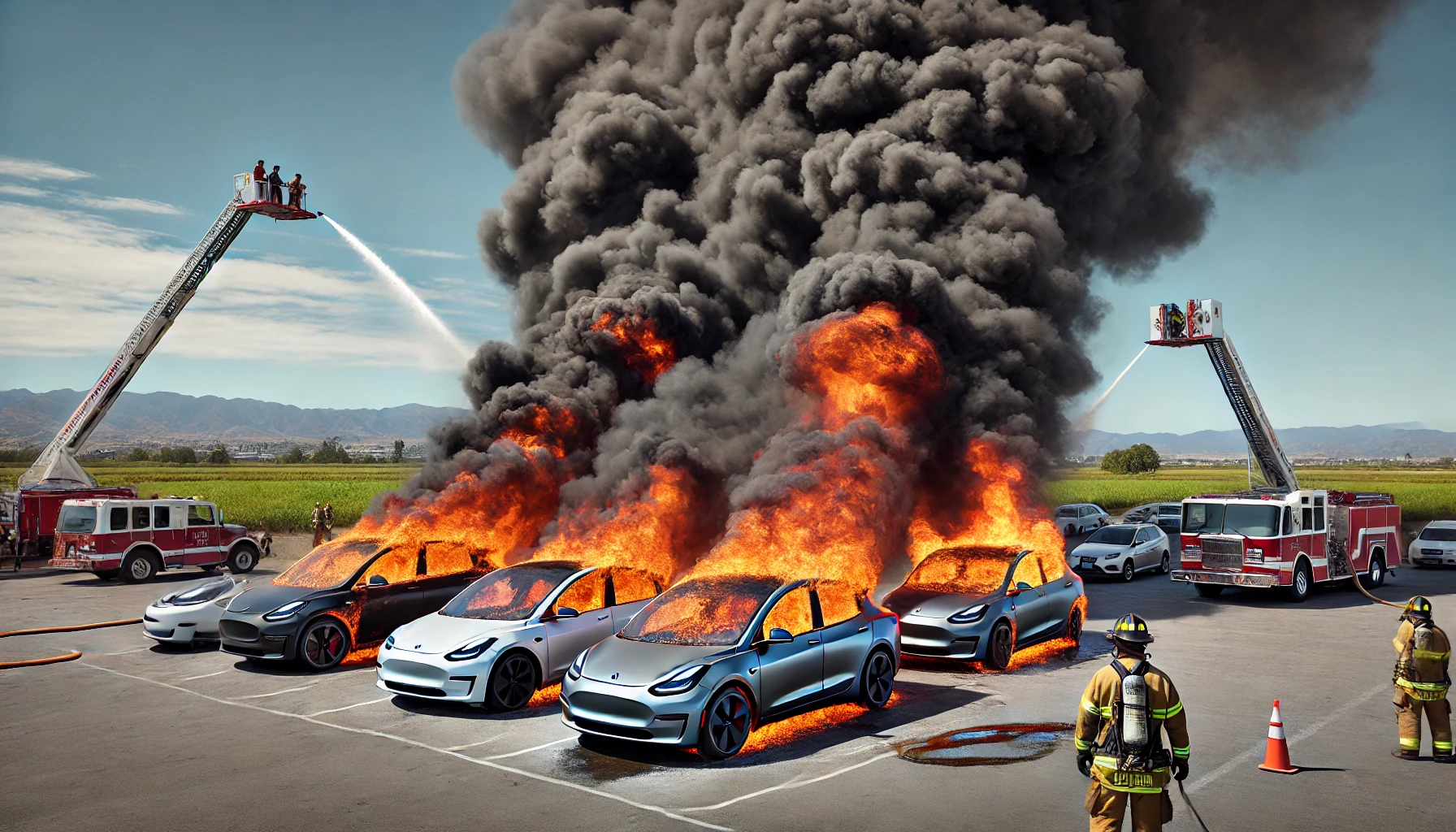The electric vehicle (EV) market is experiencing a dramatic shift. Once hailed as the future of the automotive industry, EV sales are now hitting roadblocks as major automakers, including Tesla, slash prices to stay competitive. At the same time, used EV resale values are plummeting, causing many motorists to rethink their switch to electric. This phenomenon, dubbed the ‘Tesla Effect,’ is sending ripples through the entire industry, raising concerns about the sustainability of the EV market in its current state.
The ‘Tesla Effect’ – A Race to the Bottom?
Tesla has long been the dominant force in the EV industry. Its early lead in battery technology, self-driving features, and sleek designs made it the go-to brand for many EV adopters. However, as competition has increased, Tesla has been aggressively cutting prices to maintain its market share. While this move benefits consumers in the short term, it has led to an unexpected consequence: a devaluation of EVs across the board.
The price cuts by Tesla and other automakers like Ford, Volkswagen, and Hyundai have not only created pricing uncertainty but have also caused the value of used EVs to tumble. Car Group, a leading automotive industry research firm, reports that second-hand EV prices have seen a significant drop over the past year. Consumers who previously bought EVs at a premium are now finding their vehicles depreciating much faster than expected, leading to hesitation among new buyers.
The Impact on EV Sales
According to industry reports, EV sales have slowed down significantly despite increasing global efforts to promote sustainable transportation. Several factors are contributing to this downturn:
1. Price Volatility
With major brands slashing prices, consumers are reluctant to invest in a new EV, fearing that the value will continue to drop. This uncertainty makes it difficult for potential buyers to make a long-term commitment.
2. Poor Resale Value
Used EVs are depreciating faster than traditional gasoline-powered vehicles. With the rapid advancement of battery technology and newer models offering significantly better range and features, older EVs are becoming less desirable in the secondary market.
3. Charging Infrastructure Challenges
While charging networks have expanded, many motorists still face difficulties in finding convenient and fast-charging stations. Long charging times and range anxiety remain significant deterrents for those considering an EV.
4. Consumer Skepticism on Incentives
Government incentives and tax breaks have played a major role in driving EV adoption. However, as some regions scale back these incentives, buyers are becoming hesitant about making the switch, especially when gasoline-powered cars are still seen as more reliable in terms of range and refueling convenience.
Are Automakers to Blame?
Automakers are caught in a dilemma. On one hand, they need to make EVs more affordable to attract mainstream consumers. On the other hand, aggressive price cuts and continuous technological advancements are making existing EVs lose their value too quickly, discouraging potential buyers.
Tesla’s pricing strategy, for example, has had a profound effect on the industry. The company slashed prices multiple times in 2023 and 2024, forcing other automakers to follow suit. While this price war benefits new buyers, it has negatively impacted those who purchased EVs at a higher cost, leading to frustration among Tesla owners and beyond.
The Future of the EV Market
Despite the current downturn, experts believe that the EV market still has long-term growth potential. However, several changes may be necessary to stabilize the industry:
1. Pricing Stability
Manufacturers need to establish more stable pricing structures to restore consumer confidence. Price wars may offer short-term gains, but they are unsustainable in the long run.
2. Battery Technology Advancements
One of the biggest challenges for EVs remains battery degradation. Improving battery lifespan and developing solid-state batteries could help increase resale values and consumer trust.
3. Enhanced Charging Infrastructure
More investment in ultra-fast charging networks and home-charging solutions will be crucial to making EVs more practical for the average consumer.
4. Stronger Incentives and Support Policies
Government policies will continue to play a key role in promoting EV adoption. A clear and consistent approach to incentives can help prevent market instability and ensure steady growth.
Conclusion
The ‘Tesla Effect’ has created both opportunities and challenges for the EV market. While price cuts have made EVs more accessible, they have also caused instability, particularly in the used car market. Consumers, now wary of plummeting resale values, are reconsidering their switch to electric, slowing down overall EV demand. However, with advancements in technology, better infrastructure, and strategic pricing models, the industry can still recover and thrive in the long run. The question remains: can automakers adapt quickly enough to turn this trend around?

